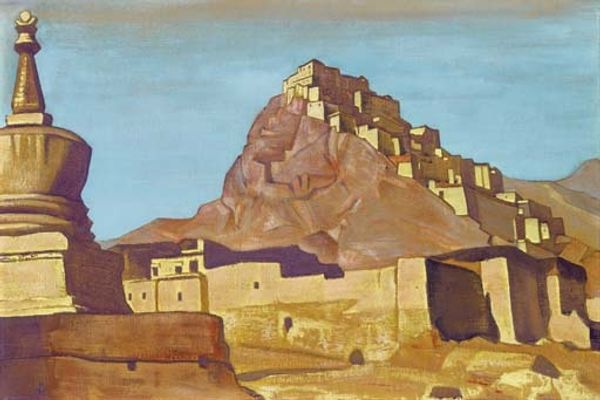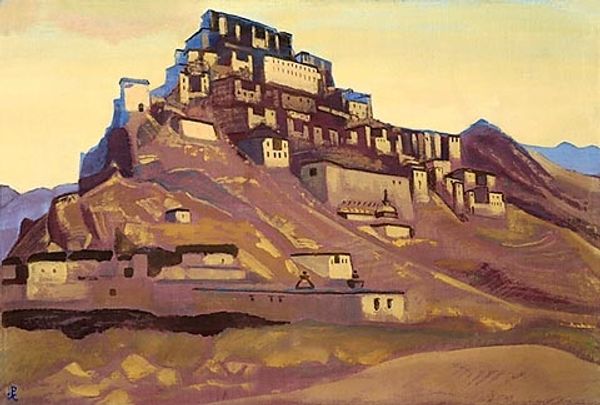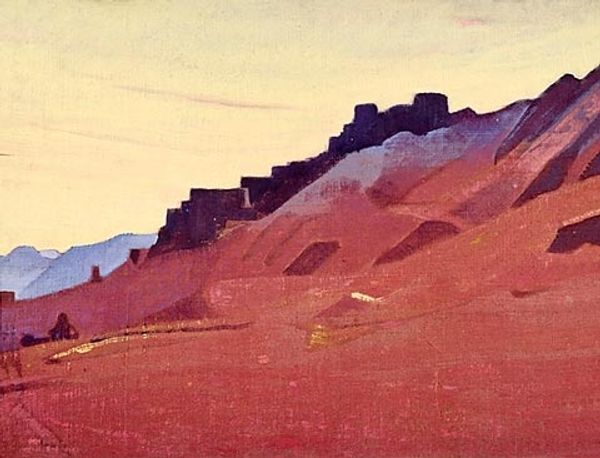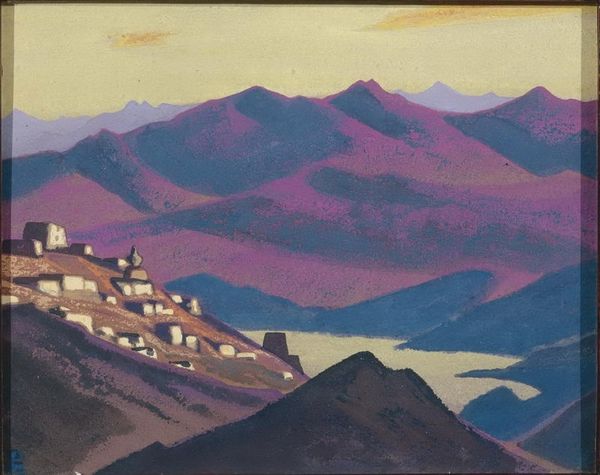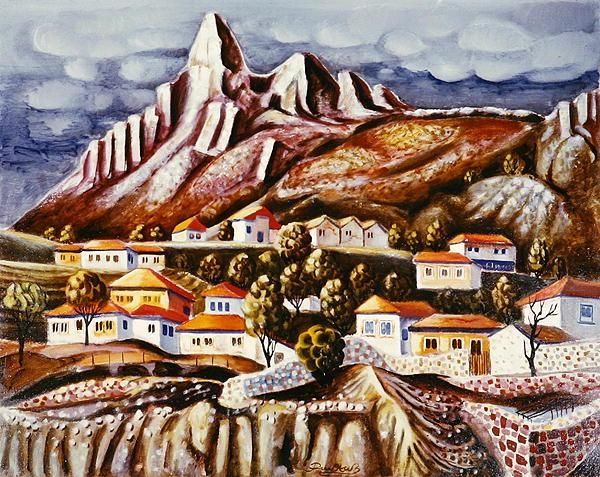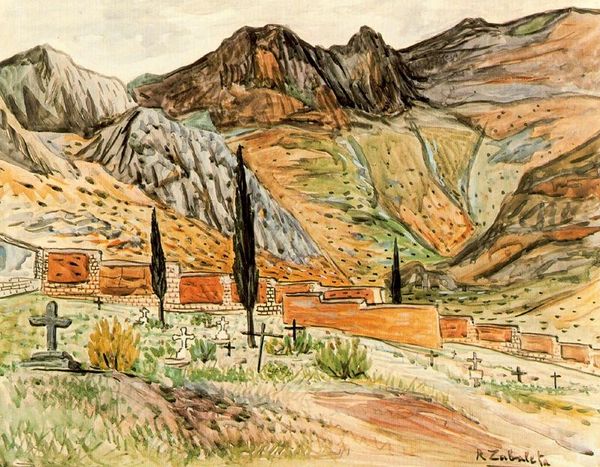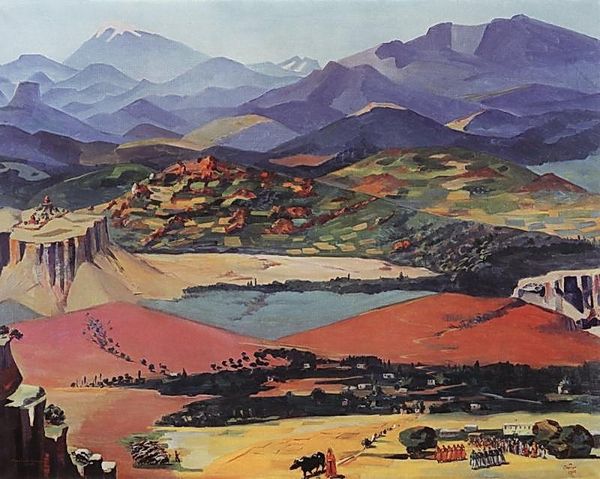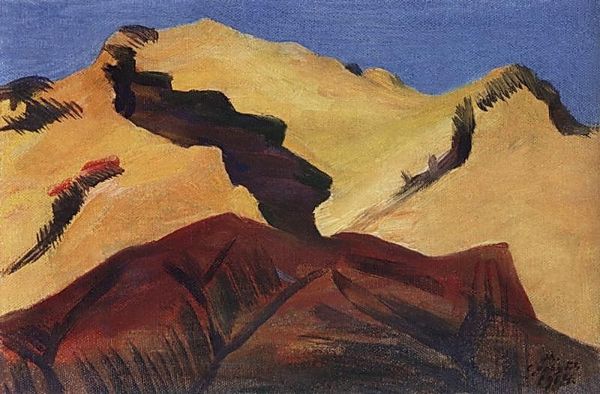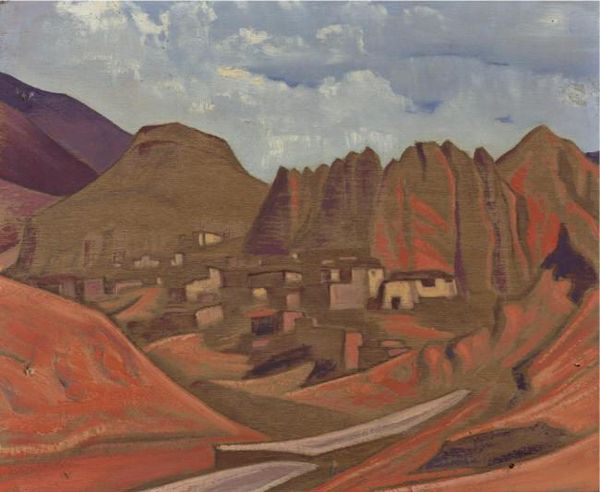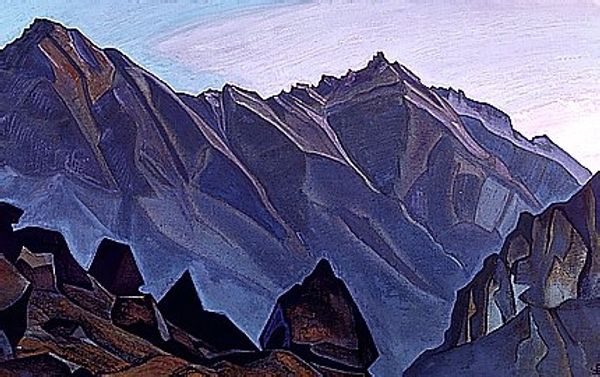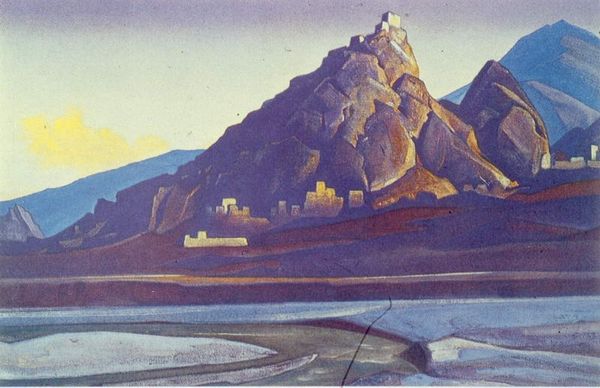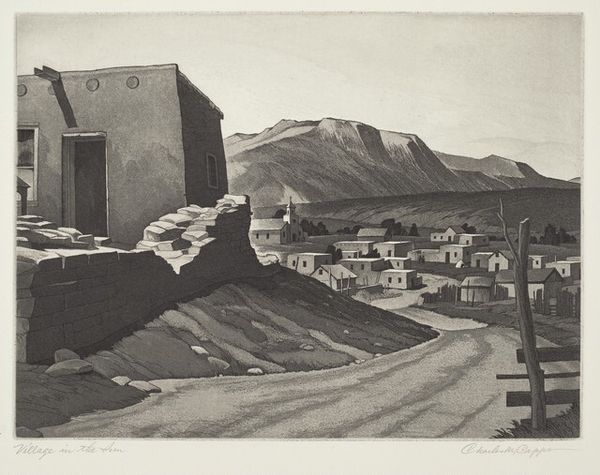
Copyright: Public domain
Editor: We're looking at "Shekar-Dzong," a 1937 tempera painting by Nicholas Roerich. It feels monumental, imposing even, with that huge mountain dwarfing the architecture clinging to it. What do you see in this piece? Curator: Immediately, the structural interplay captivates me. Observe the geometric solidity of the architecture against the organic contour of the mountain. This contrast is further emphasized by the artist’s manipulation of light and shadow, no? The stark whiteness of the buildings provides a compelling counterpoint to the ochre hues of the terrain. Editor: Yes, the contrast is really striking. Almost like the buildings are daring to exist in this landscape. How do you interpret that? Curator: I find the deployment of color particularly strategic. The limited palette—earth tones punctuated by the whites and blues—invites contemplation. The varying intensities across the forms create visual rhythm, leading the eye through the composition. Notice, too, how Roerich abandons photorealistic representation, choosing instead to emphasize form and tonal variation. Editor: So, you’re saying it's more about the feeling and form than a perfect depiction of a place? Curator: Precisely. Roerich masterfully distills the essence of the subject, focusing on the abstract interplay of shape, color, and texture. The monumental form of the mountain doesn't simply represent geological features, but something primal. He emphasizes the verticality and weight to create a statement on space and perception. The piece reveals how powerful the structural components of an artwork can be when used purposefully. Editor: I never considered it like that. Thank you! Curator: The pleasure was mine. There is so much to discover by looking closely.
Comments
No comments
Be the first to comment and join the conversation on the ultimate creative platform.
